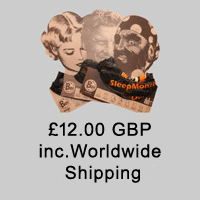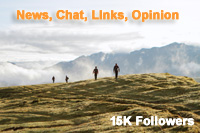The AR World Championships - Costa Rica
Seagate - The Captains Report
Nathan Fa'avae / 14.12.2013


As most people who have followed the race know, we failed to finish this years World Championship event, which is stark contrast to 2012 when we won the World Title in France.
It is important to note that this report is my view of what happened and not necessarily a view shared by the team, we each have different stories and I don't claim either to be right or wrong, it's just how we as individuals interpret the situation.
Perhaps the questions on peoples minds and questions we ourselves have endeavored to answer are:
1/ Why did Seagate withdraw from the race?
2/ Did Seagate need to withdraw from the race?
Like many things in life, hindsight gives us a recollection and reconstruction of a particular event that can lead to false theoretical outcomes. It's easy for us now to look back on the event that led to us withdrawing from the race and view that as a mistake, but that's largely based on a theoretical outcome of what we perceive would have happened had we stayed in the race, which can only be pure speculation. Had we stayed in the race maybe one of us would have been bitten by a venomous snake, or hit by a truck whilst biking, but instead our minds lean more towards the theoretical outcomes that we would have found a mysterious strength and overcame all possible odds to produce the most dynamic and against all odds victory the sport has witnessed.
Before I answer the questions, it's important to put into context the environment we were in when we made the decision to withdraw.
We had covered over 600km of the race and been going steadily for 6-days, we'd had about 8-hours sleep, but much of that had been poor quality. The course to that point had been very hard, in a physical way. The kayaks were extremely slow and required extra energy to paddle them even to a slow speed, we had to carry some big loads of gear at times and lug our bikes up some steep hills. The poor quality maps meant hours were wasted trying to piece together what the map showed and what was real on the ground. The midday heat was intense and draining, finding fresh clean water to drink was difficult.
Many of the sections were very long and many of them simply became boring, just trudging on for hours and hours for what felt like at the time little purpose. The general 'racing in tropics' added another element of challenge. All these factors were fine and not out of the ordinary in such an event but my point is that by day 6, we'd been pushed hard. Given what we'd done though, we were in excellent shape. Our race plan was to get over the high altitude mountain and then take stock of where we were in the rankings and how we felt personally and as a team. Ending day 5 we were making our way off the mountain in stage 6, a 92km trekking stage. With about 30km to go we decided it was time to make a push for the lead. Up until that point we had been sharing the lead with Team Thule, a Swedish team containing athletes from France, NZ and Spain. While we had been swapping the lead fairly regularly, we were never engaged in a head to head race, opting to focus on our race only and not be distracted by what other teams were doing. But with 30km to go in the big trek stage we decided to launch an attack which we hoped would carry us to victory. Our plan was to get a small lead exiting the stage and then extend that on the 40km Mountain Bike stage to the rafting section. Once off the rafting section our plan was to grab a sleep then do the 89km kayak stage. Paddling is a strength of our team and we figured we'd be able to extend the lead and with 3-stages remaining after that we should be able to set ourselves up for a serious winning bid.
So it began, with Thule ahead of us somewhere we started to run the trails down the valley to the end of the stage. After about 15km we caught and passed Thule, which in itself didn't mean much as they were racing their own race too, but it fitted our plan to take the lead and build on it. By the end of the stage we had opened the gap to an hour. Strangely though, both Trevor and I felt a weird sensation in our feet, mainly around the toes, it was a mixture of burning and it felt like small fragments of broken glass were in our socks.
Such things are not uncommon in these races and we'd experienced a similar thing in Brazil earlier in the year and it turned out to be a sand and grit build up, uncomfortable but not causing any real issue.
Crossing a creek near the end I decided to rinse the gravel off my feet and was surprised to discover when I cleaned my feet that there was no gravel but I was bleeding between my toes. Odd as it was I continued on.
Soon after we reached a medical control point where the Race Doctors examined our bodies and feet, all I can say is they had an epic fail when it came to helping us as they dismissed my bleeding between my toes and nothing to worry about and they treated Trevor for Foot Rot but failed to instruct him on what to do about it. Trevor and I both had Foot Rot but managed to clear the medical check.
By the end of the stage I was struggling to walk properly and getting concerned to what was going on. The next bike ride we rode smoothly but I was aware my feet were getting worse. Word came to us that we were extending our lead to over 90-minutes so from a tactics aspect things were going well, really well.
Next we had to hike 3km to the rafting and it was on this stage I found it very painful to walk, the burning between my toes was intense, I was just counting the minutes before I could sit in the raft and kayaks, we were about to spend 20-hours off our feet. The rafting was exceptionally fun but my constant worry over my feet was ruining the trip. Our raft guide, with best intentions, gave us wrong information about the race also, he said Thule were expected to start the raft 4-hours behind us which told us they had opted to stop for a sleep, which seemed a logical thing for them to do, we needed to sleep sometime ourselves. It turned out they hadn't stopped to sleep, but were instead just 2- hours behind us, not that it mattered.
Exiting the raft my feet were hard to walk on and Trevor and Sophie were also experiencing the same problem, all three of us hobbling around slowly. Our plan was to transition fast, get ready to kayak then grab a few hours sleep on the riverbank before starting the kayak.
Luckily Sophie had the wisdom to go and get her feet checked by race staff and they confirmed we had foot rot and needed treatment. What meant to be a 2-hour sleep became 2-hours of restless lying about in the heat with burning feet. Pongo the Race Director treated our feet and sent us off kayaking. By now Thule and been and gone and were some 30-minutes ahead.
The speed in which our race had gone from being incredibly exciting to being somewhat of a survival mode and damage control was startling, and I think the shock of that really rattled us.
The prospect of an 18km hiking stage followed by a 160km mountain bike seemed somewhat impossible but we had plenty of kayaking to so do we got down to business doing that.
It can't be denied though that with three of us infected with Foot Rot also having missed some planned sleep, the wheels did start to fall off the cart a little. We were paddling well enough until darkness set in then sleep monster started to cause havoc, first with Sophie and then with me. For the next few hours I felt the team didn't have any leadership and we were somewhat dysfunctional. This lead to a navigation error where we paddled up to 2- hours extra. As morning started to get closer we decided to stop and sleep, grabbing an hour before the sun started to brighten the sky.
Soon after we treated our feet again with iodine, Sophie and I were pleased that our feet had improved a lot and were starting to feel good but I was alarmed when I treated Trevor's and they hadn't shown any significant sign of improving.
After a few more hours of paddling in the canals, under some refreshing monsoon torrential rain, we reached the check point in the stage, a small resort on the Caribbean Coast. Trev could not hold his weight on his feet so we grabbed a trolley from the resort and helped him to the checkpoint.
Returning to the kayaks the media team there asked me what our plan was. I told them we'd kayak to the next village and get some more treatment for Trevs feet and see if we can get through the hike stage. They said the village at the end of the stage is very basic and the only thing there is mosquitos. It was about 10km away so I figured if we were going to stop we'd be better to stop at the resort as we could get better rest, food and a clean place for Trevs feet to improve. While it was never communicated directly to the team, I'd given up on our chance of winning, my goal now was to limit the damage and hopefully still get third. We were currently in second but Team Columbia Vida Raid were just an hour or two behind us and racing strong.
Sophie quickly went to work and arranged some rooms for us and some more iodine for our feet. Our plan was to give our feet a good clean, treat with iodine and sleep. I figured with a good nights sleep, fresh food and dedicated foot care we'd have a shot at getting to the end, it wasn't going to be pretty, but we'd have a shot. Most of our gear was sopping wet so I also wanted to dry it as we had to carry it on the 18km trekking stage to follow, and dry gear would be a lot lighter. The team washed up and hit the beds. When I returned from drying the gear and sorting the boats, I was surprised and little disappointed that Trev had gone to sleep without giving his feet a thorough treatment of iodine so Sophie and I tried to do it while he was sleeping, but even in a deep sleep, he would jerk his foot away at the most gentle touch. It seemed extremely dire and the chances of Trev being able to stand on his feet the next day seemed like an impossibility. His feet were simply not improving and appeared to deteriorating further.
I started to get worried, I have heard of small infections in Adventure Racing in the tropics quickly escalating to Septicemia and people having near death scrapes or long term affects from the illness. At this point Antonio, the Co-Race Director arrived and he wasn't to hopeful about Trevor's feet either. He suggested we get a Doctor to come and examine him. After a few attempts he couldn't get a Doctor to us but said he could get Trevor to hospital if we left within an hour. Chris, Sophie and I had a discussion about what to do but looking back, I think the time pressure to make a decision, perhaps an over reaction being concerned about the infection spreading and a bleak view that we were probably just delaying the inevitable led us to make the call to withdraw and get to hospital care. It feels now like we made the wrong call but that's the hindsight equation, it's easy now to think our theoretical outcome would have been a better option, but who really knows. What we do know is we have learned a lot from the experience and I believe without a doubt we are a stronger team for it.
In any situation in life, especially one that does not go to plan, I look to take what accountability I can, take responsibility for the outcomes, ownership for what I did or didn't contribute. When I look back on this race, for me personally, I believe we could have won, it was comfortably within our capacity and we came incredibly close to setting up a race winning break, but we didn't and we can only blame ourselves for that. So we're left with some disappointment, not that we didn't win, or that we didn't finish, but more because we didn't race to our potential, to the standard we set for ourselves. As Team Captain, I have strong captaincy races and poor captaincy races, I feel in Costa Rica I let the team down in that sense, I didn't assert my leadership enough and I didn't draw on all the race experience I possess, I don't know why this didn't happen, it just didn't, but I sense it'll be a catalyst for change that will benefit the team in the long term.
The good news is there are more races, more opportunities to learn and develop and chances to strive for that perfect performance. We must keep sport in perspective also, it's a game, a past time of the first world, a luxury. If we can't enjoy it in its entirely, the highs and lows, trials, tribulations, then one must ask, what is the point? So, for those to keen to hear what we did for the first 5-days or so, I'll go back to the start.
Stage 1 - Mountain Bike
Monday 2:00pm
Somewhere along the Panama Border we gathered under the start line with the other 75- teams, about the hottest part of the day so waiting in the direct sunlight getting fried set the tone for what was to follow. On the gun we had about a 2km run to our bikes where we had to assemble them for the 100km ride ahead. Although not our plan, we exited first from the TA but were soon over taken by a dozen teams when we over shot the dirt road we needed. The start of a race is unavoidably chaotic so for the next few hours we were trapped in a mass of rushing and flustered teams, fighting for precious seconds and placings that in just a matter of hours would hold little significance. Finally we managed to break from the pack and settle into our own pace. We ticked off a few check points while in the lead. We had noted pre race that most teams were riding hard tail bikes and we started to wonder if maybe we should have them also, but it wasn't long into the ride we were happy to have our full suspension bikes, confirming for me that the suspension is worth its weight in an expedition race. Having only got the maps when we collected our bikes, Chris was tasked with route planning as well and navigating on the go. It soon became apparent the maps couldn't be relied on 100% so we'd need to take our time and be conservative.
Approaching the next checkpoint we could see two options, one was to drop to the valley whilst the other was to remain high, and do an up and down route to get the checkpoint. This proved to be a bad call, not that we could have known that at the time. The rain had started and turned everything to mud, we descended down a very steep track and close to the checkpoint intersected another track not on the map, creating some confusion. We soon discovered we were still above the checkpoint but nearly the whole field had taken the valley option which was significantly faster. We dropped our bikes and ran about 2km to the checkpoint, the whole time weaving through the constant train of oncoming teams carrying their bikes up a steep, narrow, muddy trail. For the nearly 2-hours we had the additional challenge of picking our way through the traffic jam of teams crawling up the mountain. By the end of the stage we hit some fast plantation roads and by the TA we'd moved into second position, just Thule on the water in front of us.
Stage 2 - Kayak - 65km
Launching into kayaks is always a pleasure and ahead of us we had a long ocean paddle, split in the middle with a trekking stage, which led to a kayak portage and finally back into the kayaks for the remainder of the kayak stage. Day light breaking is a special time in adventure races and this period was one of the highlights for Sophie and I, cruising along the coastline taking in the views, marine life and new energy of the day. Ahead of us we could see Thule which meant we'd catch and probably pass them on this first paddle stage. Sure enough this is what happened when we exited for the trekking stage. We had to deflate our kayaks and hand them to the organisation to transport them to the next TA, while we were grateful for that, we couldn't understand why they didn't transport our kayak gear as well.
Stage 4 - Trek, Portage, Kayak - 65km
For close to 30km on a road we had to lumber our paddles, life jackets, trolleys and other kayak gear. It felt like we were part of the organisations logistics team rather than race teams in the event. That said, all things end and soon enough the TA arrived. Thule had caught us up so we chatted together to see the end of the stage out. Inflating the kayaks we fitted them to trolleys for the 10km portage. This looked like a seemingly straight forward stage but once the night set in and the map showing differently to what we were seeing with out torches, the next checkpoint became a little guessing game as to where it might be, thankfully we found it rather quickly but there was an element of luck.
It felt great to be paddling again and we couldn't see Thule behind us, which meant we had perhaps a 30-minute lead, though it meant nothing at this point. Soon we were paddling in deep water in the mangrove channels. Twisting and turning our way through the labyrinth of waterways. Chris was doing an excellent job navigating as we closed in on CP14. The channel we were in was getting dryer and narrower and when reached a point where the water ran out. We spent a solid 2-hours searching for a way through in the end opting to back track to our last known point and wait. The race book did mention that some controls could not be reached until high tide which was still 4-hours off so we decided to stop and sleep for 2-hours. We met Thule who were also looking for CP13 and they paddled back down the channel when we tied our boats to a tree and went to sleep. This was an error on our part. Had we gone back to the main channel we would have discovered that there was another channel and that we were in the wrong one, but the map only showed one channel so it was difficult to imagine where else we could be. On waking we paddled back up the channel, still believing it was the right one.
After nearly 2-hours of probing and searching we finally gave up and headed back, this time meeting about four more teams heading towards us. Trusting we'd searched enough all the teams headed back out and subsequently, with the aid of daylight, we saw the other channel.
This was incredibly frustrating as we'd just spent excess of 6-hours looking for a checkpoint based on what the map was saying, when some vital information was missing. Onwards we went and were met with some similar issues. This time we were punished with a channel on the map that showed it linked through to a major waterway when in fact it didn't. Once again we wasted time and valuable energy, pushing and dragging our kayaks and gear through waste deep mud. It was exhausting work and just when we thought the channel linked through, it ended, so back we went. Once again the chase teams benefitting from our probing work. Chance, guesswork and luck were playing a large role in getting through the mangroves. Our steady paddling saw us depart from the chase teams and we finished the stage in second place, about 2-hours behind Thule who'd had their share of frustration also. We were covered head to toe in mud and took a chance to swim and wash the dirt off, only to be told by a race official there were some big crocodiles nearby and swimming was not wise.
Stage 5 Mountain Bike 100km
A change of discipline is always a refreshing thing in a race and it felt good to be riding, cool breeze on us and beyond the hottest part of the day. We were to be climbing high on the ride and we looked forward to the cooler temperatures. Trev pushed himself pretty hard through the opening stages and combined with the heat he was going through a bad patch, we adjusted our speed to allow for some recovery and helped him where we could. We hoped the cool night would bring relief. Midway up the first big climb we had to stop for a 'thrill-seekers activity' a 2km flying fox where speeds of up to 120kmph were hit.
I'm not into these types of things but I must admit I found it quite a buzz. It didn't strike me as being a particularly safe operation so I wasn't surprised to hear that the next day an athlete had hit a tree whilst going down, luckily escaping with a minor injury to his leg. Back on bikes Chris did a superb job of navigation and we clipped through the stage at a good speed. Sophie was riding ultra strong and Trev was starting to recover, we were all glad that it was a night ride for us as we imagined in the day time the roads would be busy and the sun would create a furnace. Day time came around again, we stopped at a road side bakery for some breakfast and continued up the mountain to the end of the stage and the 4-hour compulsory rest stop. In terms of the positions we were in second, about an hour behind Thule and Columbia we were told were about 3-hours behind us, but I never know how factual that information is.
4-hour rest stop. This was a chance to eat and sleep. We enjoyed a good meal and a 2- hour sleep. In general terms, I felt the racing thus far had been too random, especially for a World Championship. The poor quality maps, slow kayaks and lack of course notes was governing the speed the race could be tackled at. For our team, we have a ton of power and speed we can tap into but we require some open space to do it, but we couldn't get enough momentum to race to our style. We'd have to be patient and invest time into looking after ourselves which I thought by in large, we were doing very well. It was a long race and we were pacing ourselves to the end. I recall at one point, after 4-days of racing, saying to the team, we still have a whole Godzone Race to do now. Stage 6 Trekking 92km
Our next task was the big mountain trek. For me this was the crux of the race. In France a year earlier I had crumbled in the high mountains and suffered immensely to get through the stages. I didn't want a repeat of that.
I had done some good preparation for this mountain stage that I'd hope would serve me well and the team also took the bulk of the gear, to allow me an easiest ascent possible. Chris was in fine form and loaded like a Yak, Sophie was lugging a big pack too as Trev was finding the heat and climb a nasty combo. Again, we all longed for the cooler temperatures plus rumors that we'd need mountain clothing on once we went over 3000- metres. The climb was amazing and I really enjoyed it, the views and changing zones as we went up. The high mountain had some stunning rock outcrops and we had wide views back to the ocean. On the ridge we had all our clothing on, it was cold and a chilling wind blowing, it was a time when we all felt good and a moment when you think adventure racing is the best thing ever. Somewhere in the night Chris's navigation saw us slip past Thule who had taken a different route also stopping for a sleep. We pushed on to the hut and checkpoint and nestled in for a 2-hour sleep. Unfortunately, the cold and noise level in the hut was too much and after 90-minutes we left, Thule close behind us. A small navigation error had us spend an hour looking for a trail and then we started the main descent to the valley, this was a long and muddy down trail through jungle but being soft underfoot and sliding our way down felt good on the body. We reached the next checkpoint and were told Thule were 10-minutes ahead. The race staff told Chris to climb up the spur for 300-metres and we'll hit a trail. We did at least that but couldn't see a trail, so we dropped down again to the river bed, considered using the valley to travel down but opted going back to the checkpoint. It turns out we needed to climb 300-vertical metres to the trail. We'd wasted an hour and energy. Finally we recovered from that and started down the valley. Everyone was feeling strong and happy, we picked some fresh guava to eat and I also found us a bunch of ripe bananas. It was at this point we decided to make a decisive break to win the race. You already know what happens next.
Thule went on to deservedly win the race. They had far from a perfect race but they did what they needed to do to cross the finish line before anyone else and that's worthy of congratulations and respect. Stu Lynch from New Zealand was in the team also so we were thrilled for Stu to take the victory.
I want to acknowledge the misfortune of Team Silva from Sweden, they were forced out of the race early when a team member had a mountain bike crash, they are a world class team and could have won the race had they remained in it. Columbia Vida Raid had what seemed to be a steady race that rewarded them justly and I'm thrilled to see them emerging as another major contender. Team Technu rounded out the top three drawing equal with the highly seasoned UK Adidas team. I want to thank Pongo and Antonio for the hard work and dedication they put into creating this adventure racing opportunity, without these people, their passion and energy and dedicated their staff, we don't have a sport. Pura Vida.
For us now we say thank you and good bye to Costa Rica
Thanks to all our sponsors and supporters for making it all possible. Seagate, Rocky Mountain Bicycles, GU Energy, Absolute Wilderness Freeze Dry Food, Awaken Energy Bars, Antichafe, Patagonia Clothing, inov-8 footwear, Endura Eyewear, Louis Garneau Helmets, Revelate Designs, Gloworm Lighting, Tineli, Wildside Travel, Bridgedale Socks, Wind Paddle, Keywin Pedals, Aarn Packs







 SleepMonsters
SleepMonsters



